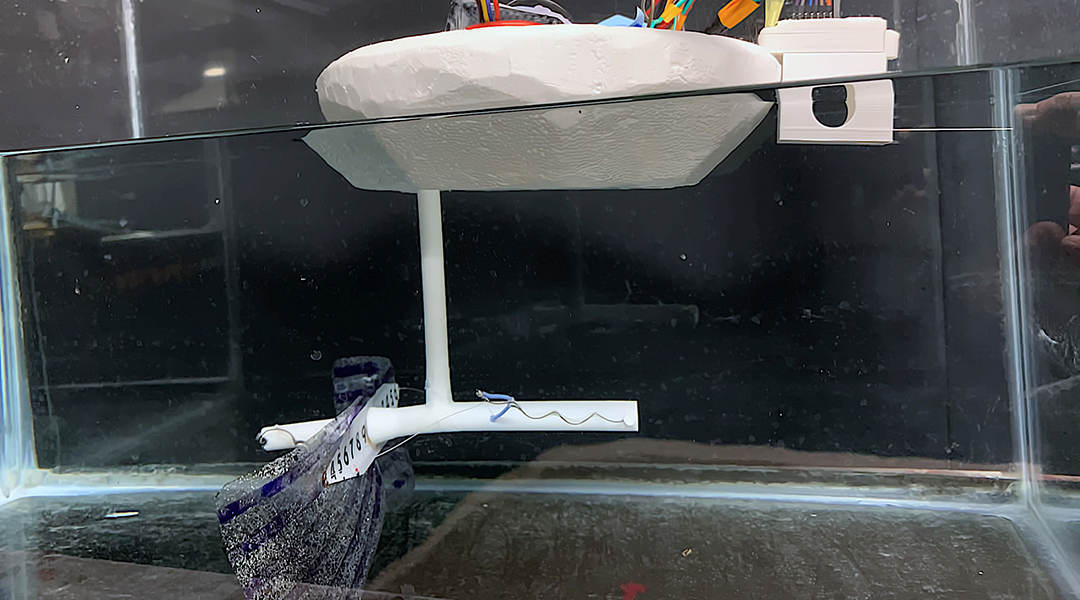Many were deeply touched by the unusual friendship forged between a diver and an octopus in the hit Netflix documentary “My Octopus Teacher ”. In the documentary, the first encounter was made when a female octopus camouflaged herself by wrapping a bunch of shells around her and tried to escape from the diver’s notice.
This is one of the many cunning surviving skills she has. She is like a teacher, showing outstanding intelligence, outwitting predators, and taunting prey. These miraculous creatures have been frequently reported showcasing their ability to escape a sealed container or a tiny hole on a fishing boat.
Michael Serpe, professor at the University of Alberta’s Department of Chemistry, recently developed a biomimetic octopus swimmer to help facilitate the group’s scientific research. Serpe’s group is focusing on utilizing etalon-based sensing technology, which uses a small glass chip with polymer and metal layers that can be used to examine water quality or perform bioanalytical analyses. Water quality monitoring is laborious and expensive as researchers need to go onsite to collect samples, sometimes in difficult to access locations.
“Why do we have to constantly collect samples and analyze them in the lab? Why can’t we bring the lab to the river?” Serpe said. “If we can develop some swimming device that can carry our sensing platform and we can just sit in the lab doing remote control and analyses, we can all be relieved.”
To facilitate this process, a wirelessly-controlled robotic swimmer was developed that mimics the octopus, swimming slowly and care-free when required and which has the ability to quickly snap away, as octopuses do to escape predators. With this swimming device, the water sampling step can be eliminated and water quality monitoring can be real-time and more efficient.
There are many motor-based swimming devices on the market. However, the swimming device developed by Serpe group is a novel design. The main swimming capability came from the center piece — a bi-stable metal strip seen in slapping bracelets; kids’ favorite toy. It can be straightened and quickly curled around the wrist whenhit against it.
The potential of this high-energy output material drew the attention of other researchers. The other material is Nitinol, a shape memory metal alloy that’s been used in many areas, most commonly as shape memory frames for glasses. This shape memory alloy can recover its pre-set shape when heated, for example, by applying electricity. “This Nitinol material is more like the core muscles in octopuses tentacles,” Serpe said, “when they contract, they will trigger the bistable metal strip to snap, just like tentacles propelling, even though there are only two tentacles in this prototype.”
To make the robotic octopus swimmer device free of wire constraints, they added a portable battery and programmed a wireless control system. This system enabled the swimming devices with precise controllability through Wi-Fi. By controlling each individual tentacle, the swimming device can change directions and swim in different speeds. “On the end of the device, we incorporated our etalon sensing chips and an on-board camera. It can actually SEE,” Serpe said. “We can now bring our lab to the river, thanks to our octopus.”
“There are still many problems to solve, for example, how do we change the battery? How to prevent corrosion?” he added, “We are looking into the problems, and they will soon be solved.”
“I loved the documentary on Netflix,” Serpe said. “We learned a lot about the octopus and now in this research, the robot octopus is serving us by helping us with scientific research.”
Reference: Yu Wan, Keith Cuff, and Michael Serpe, A Wirelessly Controlled Shape-Memory Alloy-Based Bistable Metal Swimming Device, Advanced Intelligent Systems (2022). DOI: 10.1002/aisy.202100251

















